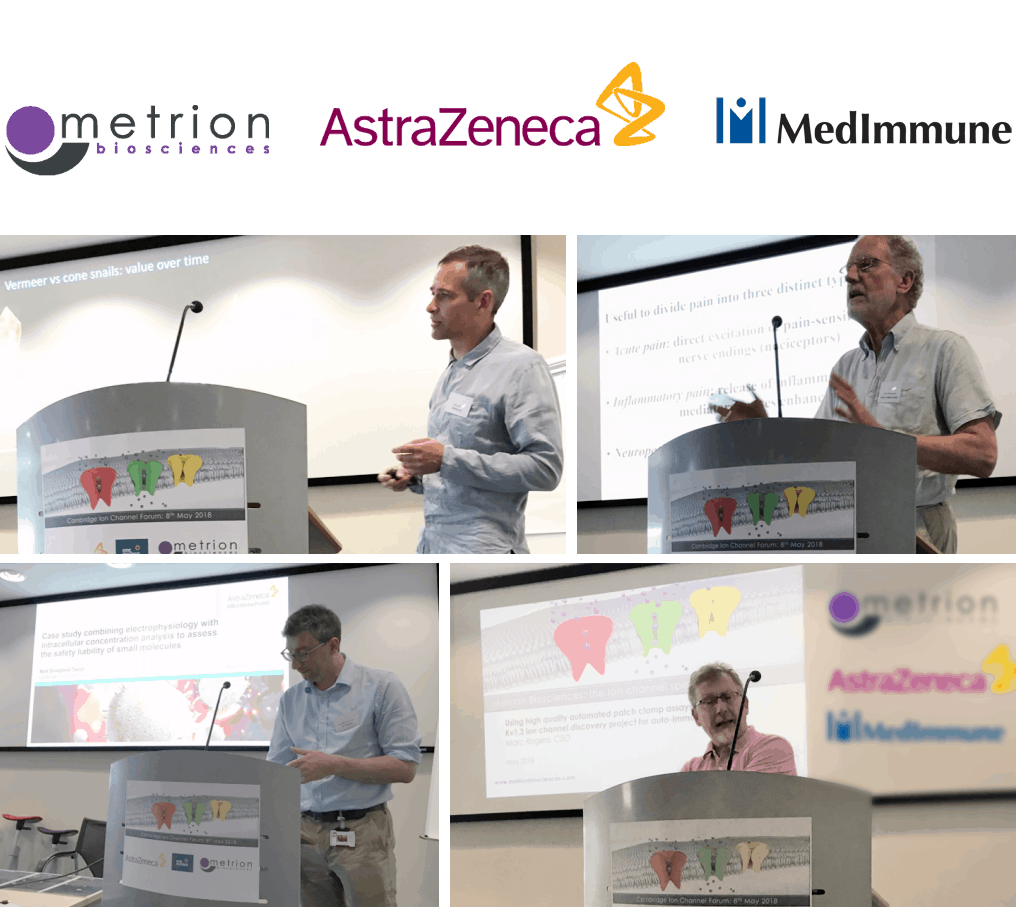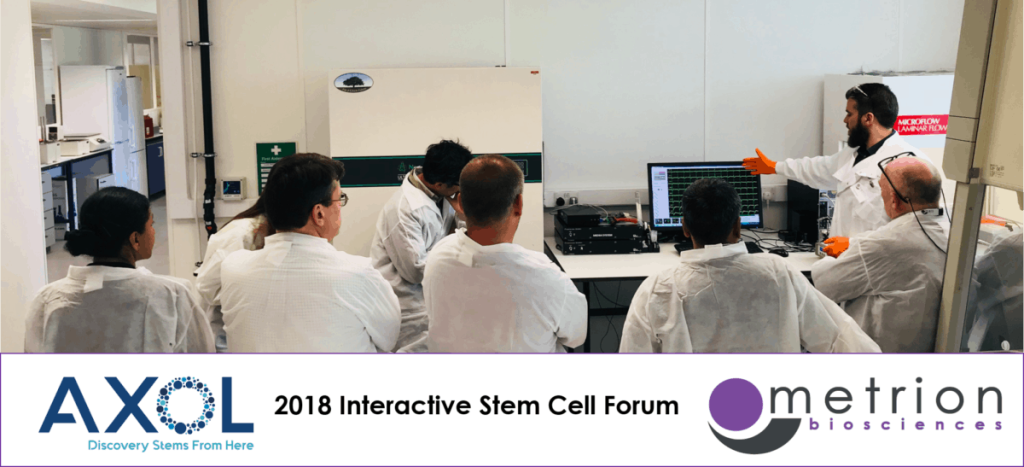Review written by the Editor
Metrion Biosciences and AstraZeneca joined forces on Tuesday 8th May 2018 to co-host the fifth Cambridge Ion Channel Forum at Medimmune’s Milstein Building on Granta Park, Cambridge (UK). Established in 2011, with previous co-organisers including Neusentis, Medimmune and BioFocus, this afternoon session of ion channel focused presentations provides an opportunity for delegates to participate in networking, present a poster and listen to presentations from respected ion channel researchers. A recurring theme throughout the 2018 event was the importance of automated patch clamp (APC) electrophysiology in support of the optimisation of small molecules, biologics and in the early cardiac safety profiling of selected compound series.

Professor Peter McNaughton gave the keynote speech
King’s College London’s Professor Peter McNaughton, who was also a presenter at the 2011 meeting, gave the 2018 the Keynote Lecture summarising his team’s progress towards developing selective hyperpolarization-activated cyclic nucleotide-gated ion channel blockers as novel analgesics for neuropathic pain. This research being founded on the observation that specific deletion of HCN2 in nociceptive neurons leads to reduced neuropathic and inflammatory pain sensation, without effects on normal sensation of acute pain.
Peter outlined the evolution of his project to develop potent and selective HCN2 blockers for therapeutic use in the clinic, with a key project objective of minimising block of HCN4 channels in the heart. Peter also touched upon his research into tinnitus, via a collaboration with Mark Wallace and Deborah Hall from the University of Nottingham. The hypothesis behind this work being that tinnitus may be reduced by use of HCN2 blockers to reduce the abnormally high firing in unmyelinated auditory nerve fibres. Both of Peter’s research programmes has significant therapeutic value and we look forward to developments towards the clinic.
Assessing the hERG liability of small molecules
Matt Bridgland-Taylor then presented a case study combining electrophysiology with intracellular concentration analysis to assess the hERG liability of small molecules. In addition to assessing any link between the intracellular concentration and the kinetic profile of block, this also allowed to verify that the hERG inactive compounds were accessing the CHO cells used in the electrophysiology assay.
Iontas’ KnotBody™ technology
Moving away from the focus on small molecules, Damian Bell gave an overview of Iontas’ KnotBody™ technology, whereby knottin toxins (cysteine knot mini-proteins) are fused into peripheral complementarity-determining regions (CDRs) of the antibody VL domain. This approach offers the potential for retaining the ion channel blocking activity of the knottin, whilst gaining an extended half-life and additional specificity conferred by multiple contact surfaces of the antibody. Damian presented proof of concept data where phage display was used to engineer specificity into both antibody and peptide, with QPatch electrophysiology data presented for both Kv1.3 and ASIC1a.
Skeletal muscle channelopathies
Skeletal muscle channelopathies was the topic of choice for Roope Mannikko from University College London, who discussed myotonia and periodic paralysis and the effect of Nav1.4 channelopathies in relation to infant sudden death syndrome. Roope’s group has also demonstrated the use of NMR techniques to probe the interactions of Voltage-Sensing Domain (VSD)-1 with HM-3, a crab spider toxin which is known to inhibit gating pore currents due to mutations found in patients with Hypokalemic Periodic Paralysis (HypoPP).
£200,000 funding to further optimise the preclinical properties of lead series compounds
The afternoon was concluded by Metrion Biosciences’ CSO Marc Rogers presenting an overview of Metrion’s use of QPatch APC assays to support identification of novel small molecule inhibitors of the Kv1.3 channel to treat auto-immune disorders. The programme has identified nM potency blockers with good gene family but no species selectivity issues, strong efficacy in native human T-cell assays, and superior drug-like properties compared to leading preclinical small molecules and biologics such as ShK-186 (Dalazatide, Kineta Therapeutics).
Metrion has secured £200,000 Innovate UK funding to further optimise the preclinical properties of lead series compounds, and plans to secure a collaboration partner to further develop immune-sparing Kv1.3 drug candidates for the treatment of autoimmune and neurodegenerative diseases in the near future.
Future events
The next Metrion Biosciences hosted event will be on 11th July 2018. Professor Trevor Jones will be presenting “Disruptive Influences on Drug Discovery and Healthcare Delivery”.


